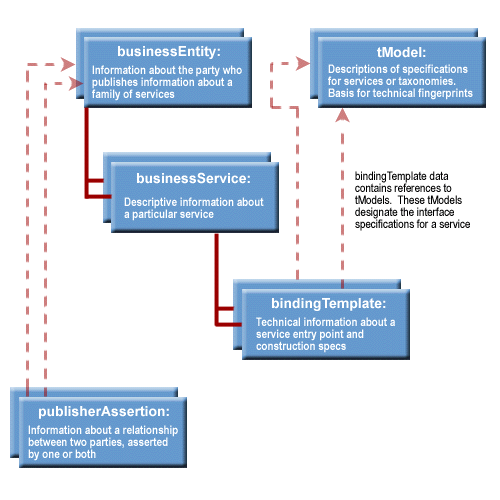XML Trends & Developments
XML Foundations (INFOSYS 242)
Erik Wilde, UC Berkeley iSchool
Tuesday, October 24, 2006
|
|
This work is licensed under a Creative Commons |
|
|
This work is licensed under a Creative Commons |
XML is a very basic technology for representing trees using a standardized markup-based syntax. An increasing number of technologies are building on this foundation, creating an expanding field of XML-based technologies for interoperability in many different fields. Application-specific XML-based data formats are used in many different settings, and the best data format for a given scenario depends on the existing formats in this area and the exact requirements. More interestingly, generic XML technologies which can be applied in many different settings make it easier for developers and system integrators to achieve their goal of making system interoperate.
Web Service Metadata

validatedwhile being constructed
<!-- tokenize the input file by lines and output them as newline-separated list of strings. --> <xsl:variable name="listing" select="string-join(tokenize(unparsed-text($fileuri, 'UTF-8'), '\r?\n'), '
')"/> <xsl:value-of select="if (@tab eq 'retain') then $listing else replace($listing, '\t', ' ')"/>
<xsl:value-of select="if ( @gender = 'male' ) then 'Sir' else 'Madam'"/>
<xsl:choose> <xsl:when test="@lang = 'en'">English</xsl:when> <xsl:when test="@lang = 'de'">Deutsch</xsl:when> <xsl:when test="@lang = 'fr'">Français</xsl:when> <xsl:otherwise>n/a</xsl:otherwise> </xsl:choose>
<video id="3325584384"> <studio></studio> <actorRef>325442748</actorRef> <actorRef>2096814035</actorRef> <actorRef>4231919377</actorRef> <director>Louis Malle</director> <title>Au Revoir Les Enfants</title>
<actor id="325442748">Feito, Raphael</actor> <actor id="4231919377">Morier, Philippe</actor> <actor id="2142583927">Racette, Francine</actor>
declare variable $firstName external;
<videos featuring="{$firstName}">
{
let $doc := .
for $v in $doc//video,
$a in $doc//actors/actor
where ends-with($a, $firstName) and $v/actorRef = $a/@id
order by $v/year
return
<video year="{$v/year}">
{$v/title}
</video>
}
</videos>
<?xml version="1.0" encoding="UTF-8"?> <文書 改訂日付="1999年3月1日"> <題>サンプル</題> <段落>これはサンプル文書です。</段落> <!-- コメント --> <段落>会社名</段落> <図面 図面実体名="サンプル" /> </文書>